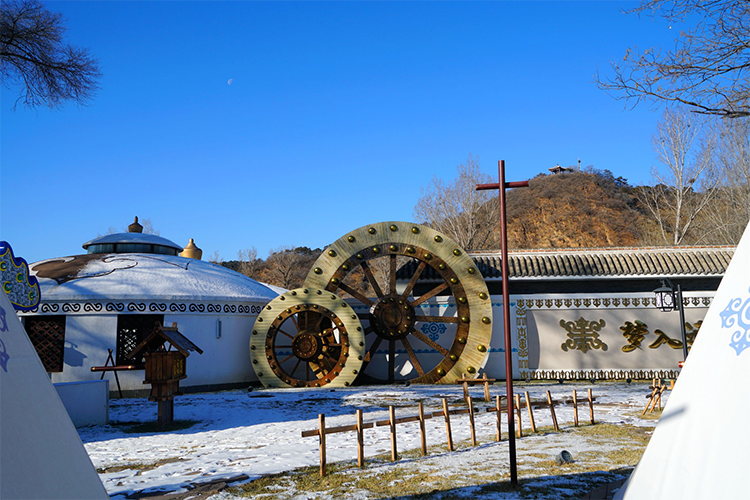Chengde Mountain Resort: Imperial Summer Retreat — A UNESCO World Heritage Site in China
Chengde Mountain Resort: Imperial Summer Retreat
Introduction: Push open the vermilion gate and time slows down. Across 564 hectares of lakes, hills, and plains lies China’s last imperial garden — once the summer palace of emperors such as Kangxi and Qianlong, and a living monument to ethnic unity. Walking among fragrant nanmu halls and Jiangnan-style arch bridges, you’ll discover a quieter, more poetic side of royal life than Beijing’s Forbidden City offers: restrained, evocative, and astonishingly diverse.
1. World-class Imperial Landscape Laboratory
“Yi tian suo di zai jun huai” (移天缩地在君怀) — Qianlong’s inscription captures the Resort’s clever artistry. As China’s largest surviving imperial garden (about seven times the Forbidden City), Chengde Mountain Resort served as the Qing emperors’ outdoor office and diplomatic reception hall. Discovered by Kangxi in 1691 during a northern inspection for its mix of grassland, forest, and lakes, the site took 89 years to build into a multifunctional imperial retreat combining politics, religion, and leisure.
Architects call the Resort a miniature map of China: in the lake district you’ll find Yanyu Tower and Jiangnan scenes inspired by Jiaxing’s South Lake; the plain recreates grassland life with yurts and horse-testing grounds; and 80% of the park’s area is mountainous, with northern pine-sound gorges. Most striking is the use of humble blue bricks and gray tiles across residences — a dramatic contrast to the Forbidden City’s gilded splendor that reflects the rulers’ philosophy of “preferring simplicity to showiness.”
2. Decoding the UNESCO Heritage’s Twin Significance
When listed as a World Heritage site in 1994, UNESCO emphasized that the Resort is a rare historical specimen of late feudal Chinese society. The main gate, Lizheng Gate, bears inscriptions in Manchu, Han, Mongol, Tibetan and Uyghur scripts — a visual reminder of its role as a stage for ethnic integration. Qianlong received the returning Torghut embassies here; Tibetan lamas regularly visited Puning Temple; and the Putuo Zongcheng Temple (the “Little Potala”) with its gilded roof still shines as a symbol bridging different faiths.
Highlights for architecture lovers:
– Danbo Jingcheng Hall: built entirely from precious nanmu wood, with no painted decoration — the wood grain itself is the ornament.
– Zhijing Yundike (the Cloud Causeway): a Su-style causeway modeled after Hangzhou’s Su Causeway, once the emperor’s secret high-speed water route to lake islands.
– Wenjin Pavilion: the imperial library housing the Siku Quanshu (Complete Library of the Four Treasuries), with courtyard paving that hides an optical “sun-and-moon” design.
3. A Royal Retreat in Every Season
Spring at the Resort is a visual feast. In April, century-old pear trees at Pear Flower Valley bloom like snow; in May, willows and mountain peaches reflect in the lakes like a living gongbi painting. Summer temperatures are typically 3–5°C cooler than Beijing — when lotus blooms carpet the water, you can glide in an antique-style painted boat as Qing court ladies once did.
Autumn turns the hills into a photographer’s dream: maples and yellow hornbeams paint the slopes in warm tones. From the Simiang Pavilion you can spot the gilded roofs of the Outer Eight Temples against the multicolored forests. Snow after winter brings a quiet, monochrome beauty: green pines dusted with white set off the gray-tile buildings, evoking the very scenes Qianlong may have seen during imperial hunts.
Best time to visit: June–October (bring sun protection in July–August during the lotus festival).

4. Deep-dive into Imperial Lifestyle Experiences
Beyond sightseeing, the Resort offers immersive cultural experiences:
– Practice tai chi at dawn in front of Yanyu Tower with local residents.
– Dine in a yurt-style restaurant and try a Qing-court inspired wild-hotpot.
– Collect 12 classic attraction stamps in your Mountain Resort passbook.
– Attend the evening “Kangxi Grand Ceremony” live performance guided by lanterns.
For the energetic: hike the mountain loop starting behind Songhe Zhai via Nanshan Jixue Pavilion to Qingfeng Green Islet — a three-hour trail with panoramic views over the entire Resort. Families or guests preferring easier travel can take the lake electric cart (50 RMB per person) and focus on palace and lake districts.
5. Practical Guide: The Perfect One-Day Itinerary
Getting there:
– High-speed train from Beijing to Chengde South takes about 1 hour; a taxi from the station to the Resort is about 20 minutes.
– Self-driving: navigate to “Dehui Gate, Chengde Mountain Resort”; parking charged at 10 RMB/hour.
Tickets (2024):
– Peak season (Apr–Oct): 130 RMB per person — includes the museum, lake district, and plain district.
– Mountain loop bus: extra 60 RMB; joint tickets recommended.
– Outer Eight Temples require separate tickets; Putuo Zongcheng Temple is 80 RMB and highly recommended.

Smart tips:
– Enter at opening (7:30) to avoid tour group crowds.
– Rent English–Chinese audio guides (40 RMB) or book a professional guide in advance.
– Lunch suggestion: walk to Da Qing Hua Dumplings for authentic Manchu flavors.
When the sunset gilds Qingshui Peak, sit in the “Shuiliu Yun Zai” pavilion and reflect on this time-traveling landscape. The Resort’s greatness lies not only in sewing Jiangnan gentleness, grassland grandeur, and Tibetan mystery into one scene, but in telling a timeless question: how can diverse civilizations live harmoniously under one sky? Your camera may be full of images, yet the scent of nanmu, a passing flock of geese, and the faint red imperial inscriptions will linger as the trip’s most moving memories.


